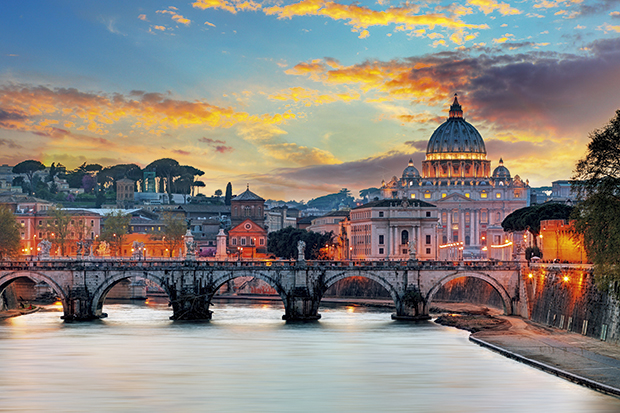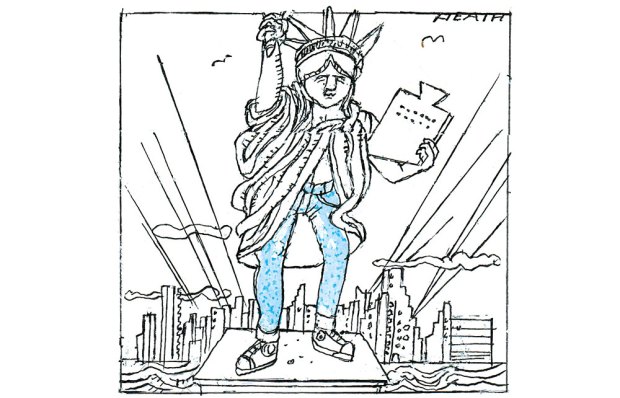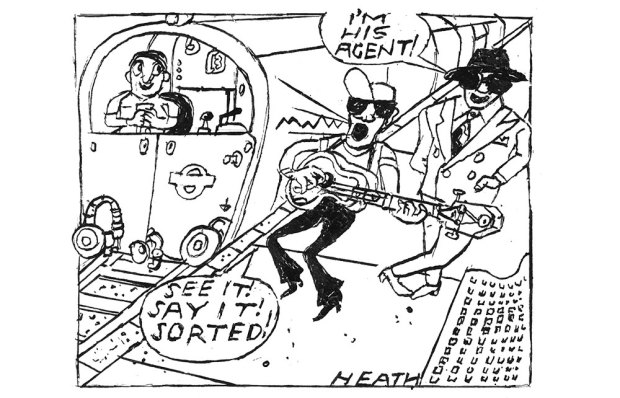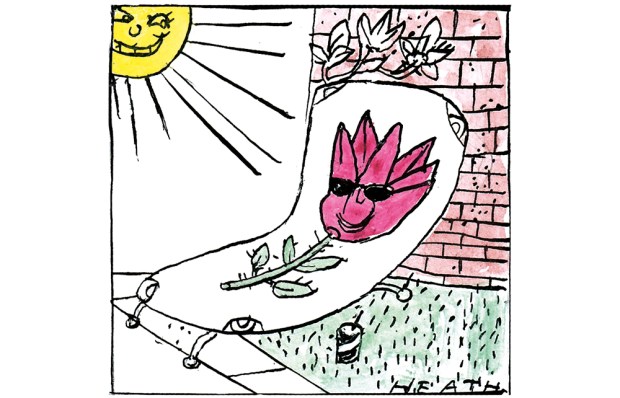The sun has only just risen in Rome and we are standing bleary-eyed in a short queue outside the Vatican. Our guide, Tonia, takes us through security, and within minutes we are in a nearly empty Sistine Chapel. In an hour it will be crammed with tourists — sweating, gawping, getting in each other’s way. Vatican officials will be shushing and clapping to quieten the chatter. Now, though, we are free to contemplate Michelangelo’s swirl of naked bodies in peace.
Michelangelo claimed that he painted the ceiling entirely on his own. In fact, Tonia explains, he started off with 15 helpers, though he got rid of them all along the way. He ‘fought everyone’, she says. ‘On the one hand he was amazing but in human relationships, no.’ He was brave, she says, in accepting the job from Pope Julius II in the first place: Julius was a ‘dreadful pope’ who ‘hit Michelangelo with a stick’.
After the Sistine Chapel we are taken around the rest of the Vatican museums, but there is a great risk of aesthetic overload. There are the famous Raphaels and Caravaggios, of course, as well as ancient Roman sculptures. But forget to look up and you will miss dazzling Mannerist and Baroque frescoes. Even the floor you are stepping on is a second-century mosaic.
It seems a great privilege to walk through the galleries with only a few other people around. The fee isn’t ludicrous, either; a ‘before-hours’ tour, shared with up to 20 people, is £38 a head, while private tours for two are £135 each through Italy With Us. If you are planning an extravagant birthday present, you can have the whole place to yourself for £1,900, or for the super-rich there are other options. Justin Bieber, for instance, paid £15,000 for his tour, which also gave him access to the Apostolic Palace, the Pope’s official residence.
You would think all this exclusivity would not sit well with Pope Francis, but he doesn’t appear to mind. If anything, he seems to want the Vatican museums to be more profitable, not less — but only so more money can be spent on the poor. The museums, the fifth most visited in the world, are a key generator of revenue for the Vatican. According to Fortune magazine, reformers led by Cardinal Pell want to raise revenues further through exhibitions and promotional campaigns.
For art lovers that can only be a good thing. Much of the Vatican’s extraordinary collection is underused, and only a few of its 60,000 artefacts are ever on display. Visitors’ obsession with the Sistine Chapel means the ones that are displayed — including masterpieces by Matisse, Chagall, Kandinsky and Bacon — tend to be ignored.
We finish our tour at St Peter’s Basilica. The building was completed in 1626, just over a century after Michelangelo did his Sistine Chapel ceiling. In between the Reformation had kicked off, leading to a shift in Catholic artistic style. The resultant St Peter’s, a dazzling mix of marble and gilt and bronze, is stupendous. No wonder people think the Vatican has unparalleled wealth.
By now the city has woken up and the place is teeming with people. Our hours of privilege are over. We emerge from the 17th century into the sunshine, our heads stuffed with stories of another age.
Got something to add? Join the discussion and comment below.
Get 10 issues for just $10
Subscribe to The Spectator Australia today for the next 10 magazine issues, plus full online access, for just $10.
You might disagree with half of it, but you’ll enjoy reading all of it. Try your first month for free, then just $2 a week for the remainder of your first year.














Comments
Don't miss out
Join the conversation with other Spectator Australia readers. Subscribe to leave a comment.
SUBSCRIBEAlready a subscriber? Log in